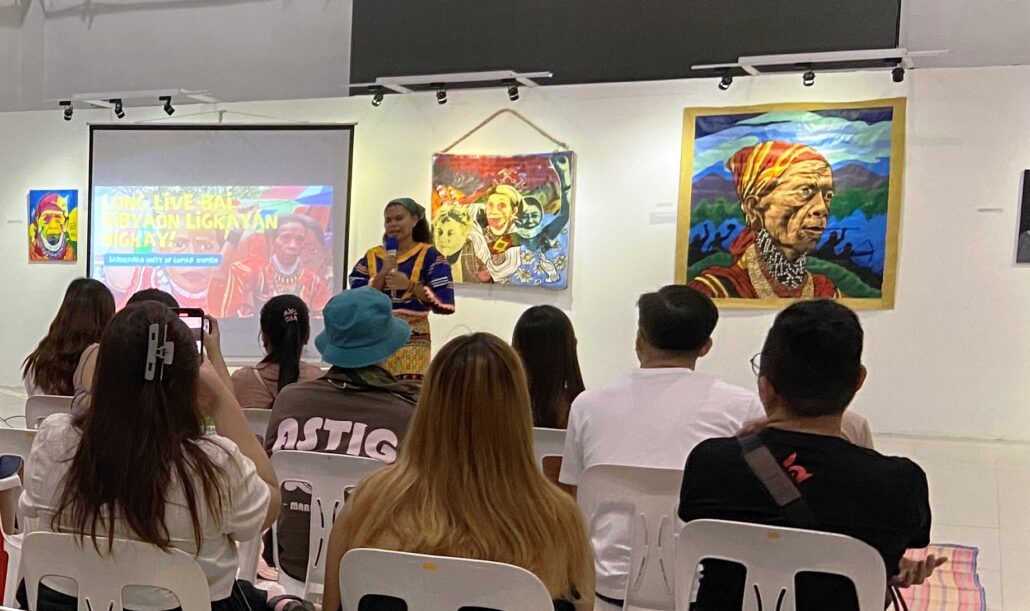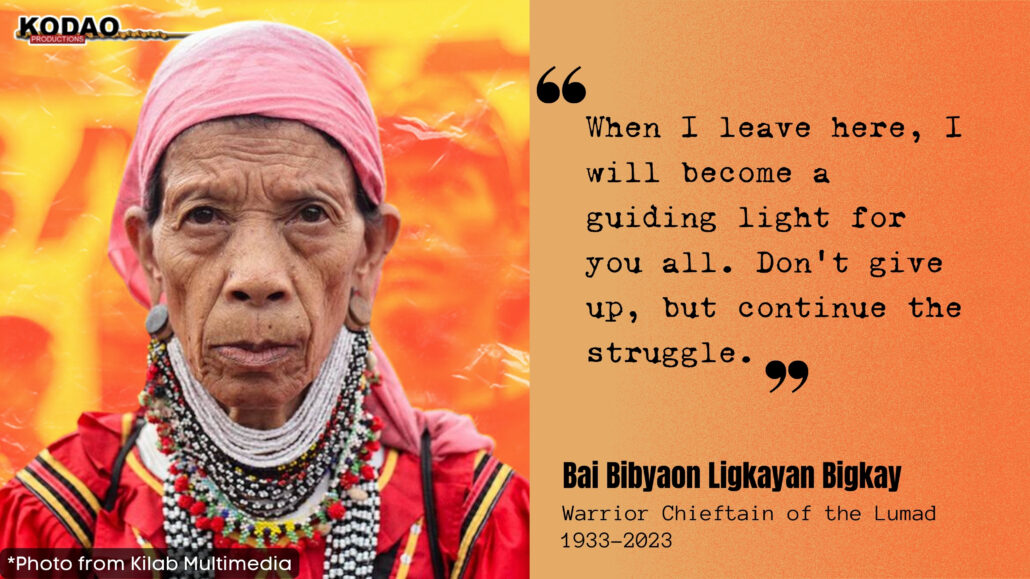THE indigenous and Moro peoples will never be stopped in their struggle for self-determination, national minority groups said as they wind down their Pambansang Lakbayan ng mga Pambansang Minorya 2016 at a rally in Mendiola last October 21.
Two days after the brutal police dispersal in front of the United States Embassy in Manila, thousands of Lakbayan participants said they will go back to their communities and continue their fight for self-determination and other human rights.
“We will not be stopped by state violence and imperialism,” Josephine Pagalan, a Lumad Manobo said.
“We Lumad have developed our communities and founded our schools in the face of the worst kinds of discrimination. This is proof that the national minorities are more than capable of relying on themselves,” Pagalan said.
Pagalan added their our progressive initiatives are directly attacked by a “rotten, fascist social system.”
“But we continue to fight, because our struggle for self-determination is justified, she said.
Why they travelled to Manila
The national minorities addressed the many questions about their struggle and why they travelled to Metro Manila as part of the Lakbayan.
“Our struggle is for our right to self-determination, which is strongly tied to the anti-imperialist struggle of the Filipino masses. It is our right to freely determine our political wellbeing and freely pursue our socioeconomic development at our own pace,” Windel Bulingit, spokesperson for Cordillera Peoples’ Alliance, said.
“It is a struggle we can win only if the Philippine society achieves true progress, when the rule of US imperialism is brought to an end,” Bulingit said.
“All of us who took part in the Lakbayan also call for an independent foreign policy,” added Piya Macliing Malayao, spokesperson for Sandugo.
“The national minorities have a lot of experience with foreign powers and we can say that they, led by US imperialism, have brought nothing but harm, not just to us, but to all Filipinos,” Malayao said.
“Foreign intervention only brings mass landgrabbing and environmental destruction thanks to destructive mining and energy corporations and plantations. There are also US military bases that destroy our communities and violate our rights – and our own military is, unfortunately, taking a page from them. There have been too many massacres of our brethren by the US military via the Armed Forces of the Philippines,” Malayao added.
“The violations against us do not appear enough in the mainstream media, nor in social media,” Bulingit added. “That is why we are here to bring our issues to the people in the city, to the seat of power.”
Post-brutality
The protesters also condemned the excessively violent dispersal of their protests in front of Camp Aguinaldo and the US embassy.
The national minorities held a protest in front of Camp Aguinaldo last October 18, where their peaceful condemnation of the military presence in their communities was met with dispersal with water cannons.
Their protest in front of the US embassy last October 19 was met with worse violence.
As the rally was ending, Col. Marcelino Pedrozo of the Manila Police District arrived and ordered the arrest and dispersal of the rally to save face with the embassy..
The PNP proceeded to violently push the protesters back while a police mobile unit driven by PO3 Franklin Kho ran over rallyists, including Malayao.
They proceeded to violently harrass and pursue protesters, medics, mediamen and bystanders filming the events.
At least 50 were injured while 29 were arrested.
“What the US embassy and their puppets, the PNP, did to us was not right. That is not the work of policemen. That was the work of terrorists. Do they think that our status as national minorities makes such violence ok?” Bulingit said. ”
“The Philippines is for Filipinos. The PNP must serve the Philippines and not foreign powers,” Bulingit added.
Einstein Recedes, secretary-general of Anakbayan, defended the protesters.
“There are those who falsely believe that we have been paid,” he said. “That is nothing but vicious imperialist propaganda spread by the PNP. None of us were paid to protest and hold rallies because our principles do not have a price.” # (Abril Layad B. Ayroso)



